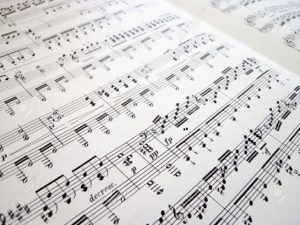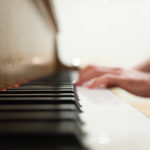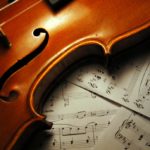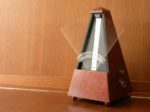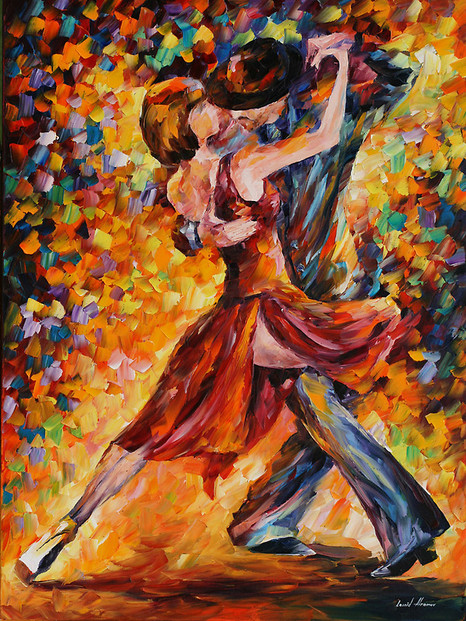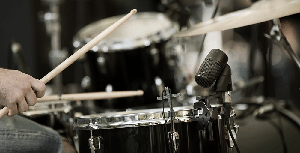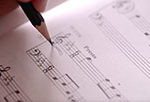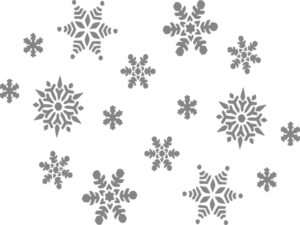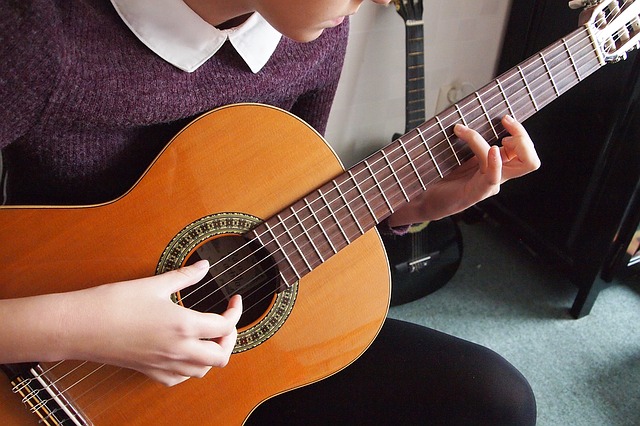
Throughout the course of your guitar journey, there will be essential guitar and musical terms that help facilitate effective communication, especially if you’re planning on playing with a band. This article introduces some of the most important terms.
Guitar
Acoustic Guitar - A steel-string instrument that has either six or twelve strings. An acoustic guitar produces sound acoustically without the help of electronics or amplifiers.
Acoustic-Electric Guitar - Sometimes called a semi-acoustic, an acoustic-electric guitar is fitted with electronic pickups in its body so that it can be electronically amplified with an amp. The acoustic-electric guitar is useful for playing for a large audience, as an acoustic guitar cannot project loudly enough.
Action - The distance between the bottom of the strings and the fretboard. Having good action is essential as guitars with high action are very difficult to play and can tire out your hands quickly. The action is usually adjusted by a guitar technician with the necessary tools.
Alternate Tuning - Alternate tunings are tunings other than the standard tuning E-A-D-G-B-E. There are hundreds of alternate tunings, and some common ones include Drop D (D-A-D-G-B-E), DADGAD (D-A-D-G-A-D), and open E (E-B-E-G#-B-E).
Alternate Picking - A picking technique that requires your right hand to move in a constant down-up motion, as opposed to only down strokes. This technique is necessary if you want to play fast.
Amplifier - An electronic device that amplifies the signal of an electric guitar or bass to produce sound through a loudspeaker. An amplifier is necessary because the electronic signal of an electric guitar or bass is usually very weak.
Barre Chord - One of the first “moveable” chords that most guitarists learn. It gets its shape from either the open E or A chord. The entire chord is moved up the neck with one of the fingers of the left hand pressing down two or more strings, hence the name “barre.”
Bends - A playing technique, used extensively in rock and blues, that requires one or more fingers on your fretting hand to bend the guitar string to raise the pitch.
Body - The main section of the guitar. For acoustic guitars, this is where the soundhole and bridge are. For electric guitars, the pickups, bridge, and control knobs reside here.
Bridge - The part of the body where the strings are anchored into the body.
Bridge Pins - Usually only seen on acoustic guitars. These pins hold down the strings and keep them in place at the bridge.
Capo - Working similarly to a clamp, the capo is a popular tool used to change the notes of all six open strings of the instrument. It presses down on all six strings at a certain fret. For example, if the strings are originally tuned to the standard E-A-D-G-B-E, putting a capo on the first fret would raise every note by a half step, which means the open strings now produce the notes F-A#-D#-G#-C-F.
Chord Diagram - A diagram that uses X’s, O’s, and numbers to show you where to place your fingers to play a certain chord. The alphabet at the top indicates the chord. The vertical line all the way at the left represents the sixth string, and that all the way at the right represents the first string. The horizontal boxes represent the frets. The numbers below the diagram tell you which fingers to use: 1 is Index is 1, 2 is middle, 3 is ring, and 4 is pinky. X’s tell you which strings not to play, and O’s tell you which open strings to play. The dots in the diagram show you which frets to press.

This diagram, for example, indicates how to play a D major chord. You will not play the sixth and fifth string, but the fourth string will be played as an open string. You will use your index and middle fingers to press the second frets of the third and first strings respectively, and you will use your ring finger to press the third fret of the second string.
Classical Guitar - A six-string guitar that uses nylon strings. It is commonly used in classical, Latin, and Flamenco styles of music.
Double stops - Playing two notes at once on the guitar, usually on adjacent strings.
Dreadnought - The most common shape of acoustic guitars. It was first produced by Martin Guitars but has since been copied by hundreds of manufacturers. It is the largest acoustic guitar shape, which allows for the loudest tone.
Electric Guitar - A steel-string guitar that uses electronics and an amplifier to produce sound.
Fingerstyle - A style of playing that uses the fingers on your picking hand to pluck the strings instead of a pick (also known as plectrum).
Fret - Metal wires that are raised above the fretboard. They divide the fretboard into fixed segments of musical intervals. The term fret can also be used as a verb, which means to press a note on the fretboard.
Fretboard - The front of the neck where the frets lie. This is where different notes are pressed with the fingers of your fretting hand.
Headstock - The top part of the guitar where the tuners reside.
Humbuckers - A type of electric guitar pickup that uses two electrical coils to “buck the hum” that single coil pickups usually have. Single coils have a notorious 60 hz hum that is difficult to remove. Humbuckers use two coils in a single pickup and sets the phase of both coils, so that they are opposite of each other. By flipping the phase of one pickup, the hum of both pickups cancel each other out, and the result is silence. However, having two coils instead of one affects the sound of the pickup, which is why single coil pickups and humbuckers sound very different.
Intonation - The accuracy of the notes on the fretboard in terms of pitch. Ideally, every fretted note should be perfectly in tune when the open strings are in tune. However, this is often not the case and a compromise is often sought.
Lead Guitar - The melodic parts of a song played by a guitar.
Luthier - An individual who makes and repairs guitars.
Nut - A hard piece of plastic, bone, or synthetic bone near the headstock. The nut elevates the strings above the fretboard. Many argue that the material of the nut affects the tone of the guitar.
Neck - The part of the guitar that connects the headstock and body. The front of the neck is also where the fretboard lies, and inside the neck lies a steel rod called the truss rod.
Palm Mute - A common rock and pop technique that has the palm of your picking hand lying on the strings near the bridge to produce a slightly muted tone.
Pick - Also known as a plectrum. This is a tool to pick the strings with your picking hand. Picks come in different sizes, thickness, and materials, all of which affect the tone.
Pickups - Magnetic devices that sit under the strings in electric guitars. They convert the vibration of the strings into electrical signals, which is then routed out into an amplifier. They are commonly designed as single coils or humbuckers.
PIMA - These are four letters derived from the spanish words for thumb (pulgar), index (indice), ring (medio), and pinky (anular) fingers. These letters are commonly used to describe fingerpicking patterns to be performed with the picking hand in fingerstyle songs. For example, the following chart describes a typical fingerpicking pattern.
| 1 | + | 2 | + | 3 | + | 4 | + |
| P | I | MA | P | P | I | MA | P |
Relief - When referring to guitars, the term describes how much the neck is bent forward. The neck inevitably bends forward due to string tension, and the bending can be countered by adjusting the truss rod that lies within the neck. Very often, having a slight neck relief is preferable, because it gives the strings some space to vibrate, which removes any buzzing issues.
Rhythm Guitar - The guitar part that mostly plays chords and provides rhythm to accompany a lead instrument.
Saddle - A bone, plastic, or metal (in the case of electric guitars) object that protrudes above the bridge section of the guitar. The first point of contact for the strings at the body of the guitar is the saddle. The saddle elevates the strings above the fretboard from the bottom of the instrument. Similar to the nut, it is argued that the saddle affects the tone of the guitar.
Setup - To have your guitar set up means to get it adjusted for better string action, intonation, and neck relief. This is normally performed by a luthier or a guitar technician. Having your guitar, especially a brand new one, set up gets the instrument to play and sound at its best.
Single Coil Pickup - A magnetic pickup that uses a single coiled magnets (as opposed to double-coils in humbuckers) to pick up the vibrations of steel strings. The vibrations of the strings produce changes in voltages that can be detected by the magnets in the pickup. The voltage change is then routed out as an electrical signal to an amplifier, which converts the signal into sound through a loudspeaker.
Solid Body - Refers to guitars that have a body that isn’t hollow. They are often made from a single piece of wood or different pieces of wood. Solid body guitars are always electric guitars, as acoustic guitars require a hollow or chambered body to produce an acoustic sound that is audible.
Standard Tuning - The standard tuning of the open strings is, starting from the sixth (thickest) string, E-A-D-G-B-E.
Tablature - Also known as TABs. This is a guitar-specific style of writing music that is popular, because it is descriptive, easy to understand, and easily taught. As opposed to using notation symbols from standard sheet music, TABs use numbers and other alphabetical symbols to notate notes and techniques.
Tone - A rather abstract term to describe the overall sonic characteristics of an instrument or the sonic characteristics of a person’s playing. Words used to describe tone are often abstract, for example, warm, tinny, piercing, smooth, bubbly, fat, thin, and buttery.
Truss Rod - A metal rod that lies in the guitar neck. This metal rod is used to adjust the relief of the neck and to counteract the tension of the strings that pulls the neck forward.
General Music Theory
Accidental - Notes that don’t normally occur in a certain key and have to be notated with a sharp (#), flat (b), or natural (♮) symbol. For example, the key of C major has no naturally occurring sharp of flat notes, so a G# will have a sharp symbol beside it.
Arpeggio - Also called a “broken” chord. An arpeggio is played with one note at a time instead of all of the notes simultaneously.
Articulation - The way in which a note or musical phrase is performed. Just like in speech, musical notes and phrases can be expressed in many ways: smooth and flowy or jerky and jumpy. These are different ways to articulate the same phrase.
Augmented Chord - A chord with the intervals of a root note, major third, and augmented fifth. It is one of the four basic triad chords.
Bar - Music is divided into bars, which most commonly have four, six, or eight beats. Having music divided into bars allows listeners to follow along a piece of music and musicians to pinpoint an exact location of a song.
Bar Line - A vertical line that separates the bars.
Blue Note - In jazz and blues, blue notes create tension because they are typically out of the standard major and minor scale. These notes are often the lowered third and lowered seventh note of a major scale, and a lowered fifth of a minor scale.
BPM - An acronym for “beats per minute.” It is a unit of measurement to notate the speed of a piece of music, or a particular section of a piece of music. It is the same unit of measurement for heart rates. For example, a tempo of 120 bpm means 120 beats in a minute.
Chord - Three or more notes played together can be considered a chord. Chords often follow formulas. The four most common chords are major, minor, diminished, and augmented chords. These are three-note chords, also known as triads. The major chord has the formula of a root note, major third, and perfect fifth; the minor chord has a root note, minor third, and perfect fifth; the diminished chord has a root note, minor third, and diminished fifth; the augmented chord has a root note, major third, and augmented fifth.
Diminished Chord - A chord with the intervals of a root note, minor third, and diminished fifth. It is one of the four basic triad chords.
Interval - The distance between two notes. Intervals have two components to their names: quality and quantity. Quality terms include major, minor, diminished, and augmented. Quantity terms are numbers from 2 through 14.
Major Chord - A chord with the intervals of a root note, major third, and perfect fifth. It is one of the four basic triad chords.
Major Scale - A seven-note scale and the most commonly used scale in modern pop music. The sequence of intervals between each note of the major scale is whole-whole-half-whole-whole-whole-half steps. For example, if you start on the C note, the notes following the interval formula are C-D-E-F-G-A-B-C.
Metronome - A tool to keep musicians in time. You can set the BPM in the metronome and it will beat at a consistent pace.
Minor Chord - A chord with the intervals of a root note, minor third, and perfect fifth. It is one of the four basic triad chords.
Pentatonic Scale - As its name implies, it is a five (penta) note (tonic) scale that is often used in pop, rock, and blues music. The major pentatonic scale is the major scale without the 4th and 7th scale degrees, while the minor pentatonic scale is the minor scale without the 2nd and flattened 6th scale degrees.
Time Signature - Time signatures denote the number and the kind of beats in a bar. It is often represented with a top number and a bottom number. The top number tells you the number of beats, while the bottom number tells you the type of beat. 2 is a half note, 4 is quarter, 8 is eighth, and 16 is sixteenth. So in the case of 4/4, the most common time signature, there are 4 quarter beats in a bar.
Ready to learn the guitar?
Start learning with our 30-day free trial! Try our guitar courses!
About Liberty Park Music
LPM is an online music school. We teach a variety of instruments and styles, including classical and jazz guitar, piano, drums, and music theory. We offer high-quality music lessons designed by accredited teachers from around the world. Our growing database of over 350 lessons come with many features—self-assessments, live chats, quizzes etc. Learn music with LPM, anytime, anywhere!


